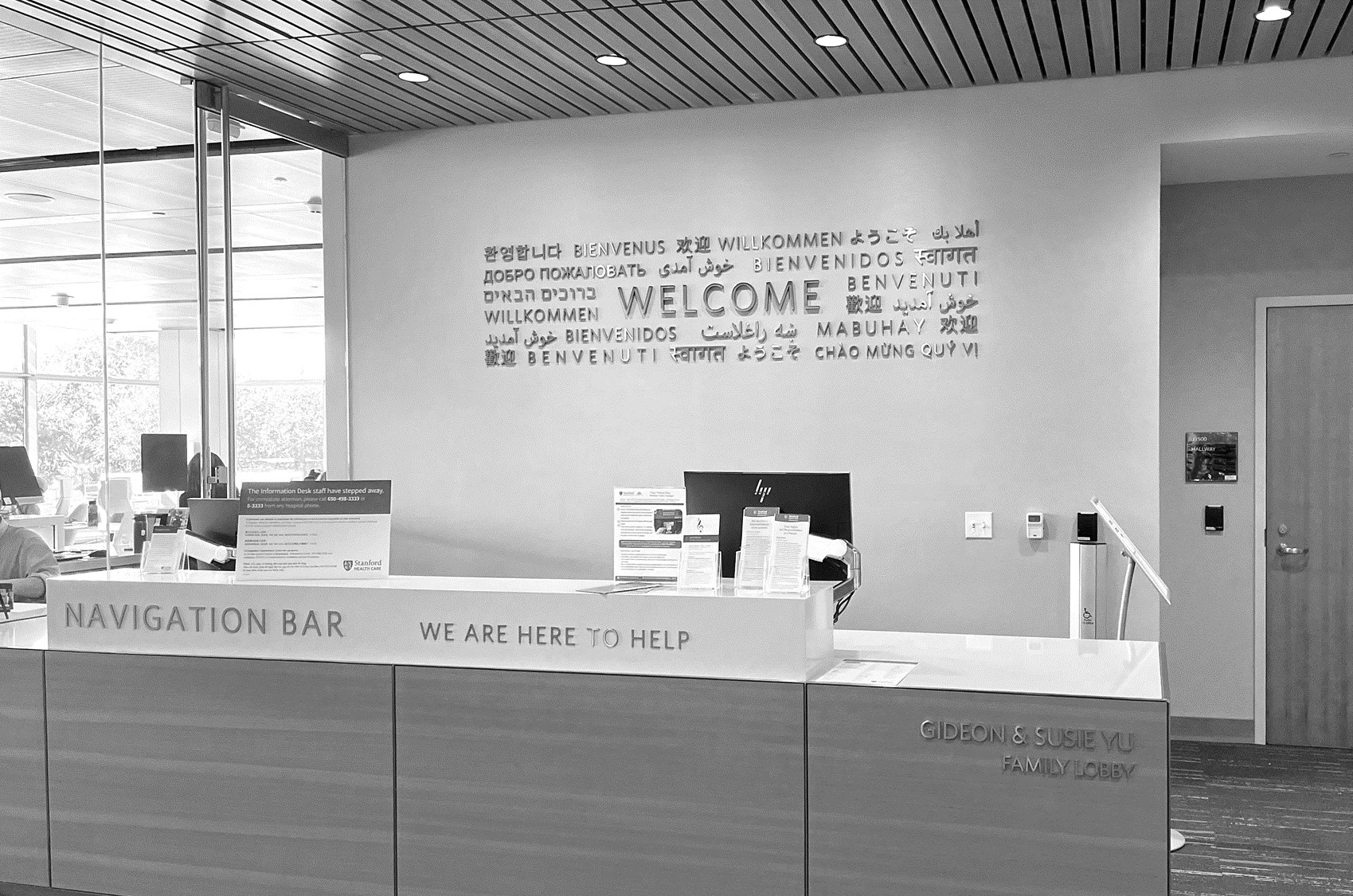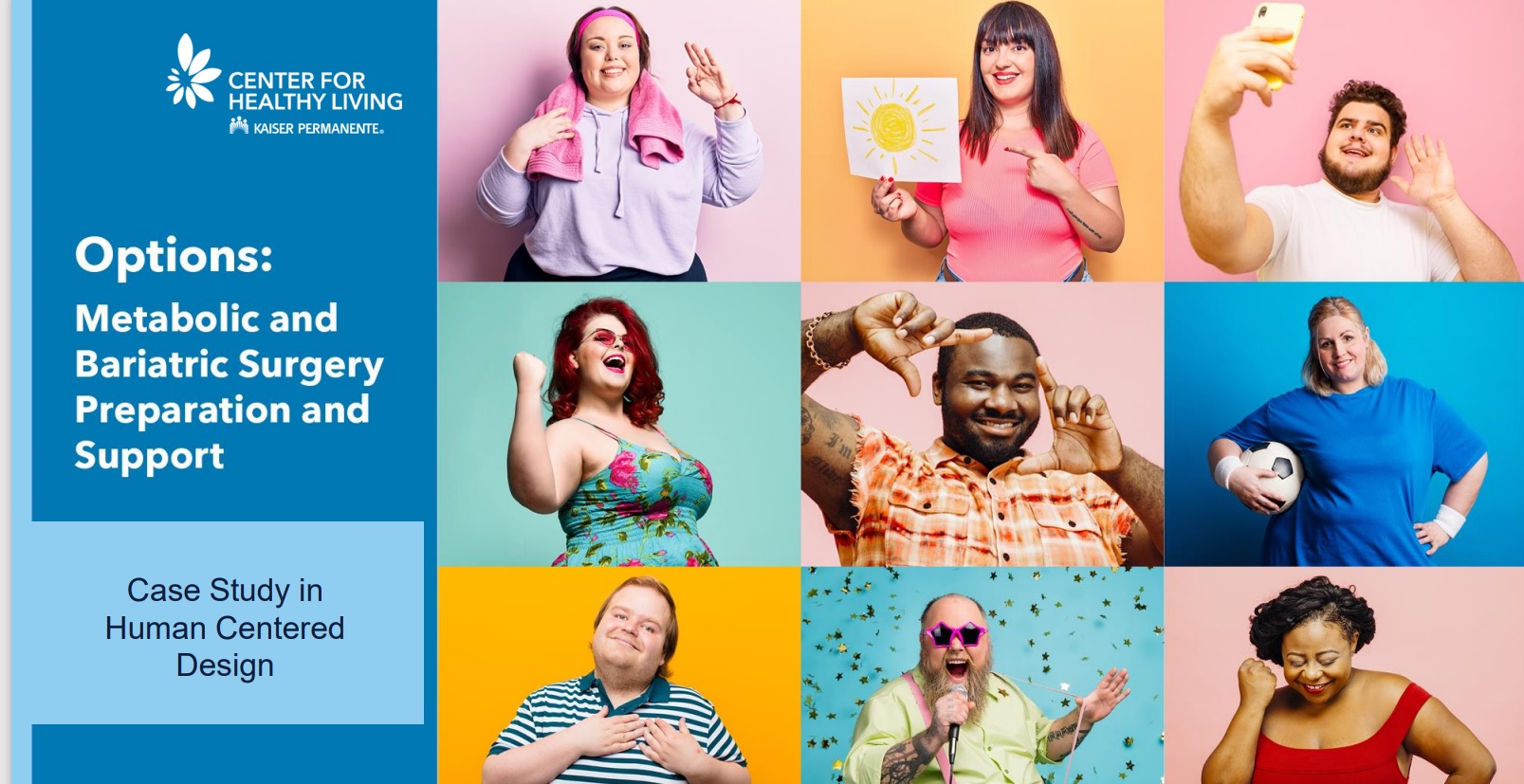 Permalink
Permalink Entries in patient centered design (2)
Stanford Health Care Elevates Patient Experience with Design Thinking
 September 5, 2023
September 5, 2023  Navigation Bar for Stanford Health Care Patients“Healthcare today is changing and we need to be a catalyst for change with our patients,” explains Alpa Vyas, Stanford Health Care’s Chief Patient Experience & Operational Performance Officer. “In order to create a superior experience for our patients, we have expanded our understanding of patient needs through empathy, incorporating design thinking into our clinical and operational processes."
Navigation Bar for Stanford Health Care Patients“Healthcare today is changing and we need to be a catalyst for change with our patients,” explains Alpa Vyas, Stanford Health Care’s Chief Patient Experience & Operational Performance Officer. “In order to create a superior experience for our patients, we have expanded our understanding of patient needs through empathy, incorporating design thinking into our clinical and operational processes."
As part of Stanford Medicine, Stanford Health Care has a long history with patient experience and is committed to continuous improvement by collaborating with patients on products, programs and processes. Patient Experience is one of Stanford Health Care’s four main pillars, demonstrating the importance to their organization.
At the PX Symposium in Boston, Alpa will be presenting Design Thinking Rx: A Prescription for Innovative Healthcare Solutions. Join me at the Symposium to learn more about Stanford Health Care and other truly patient- centered organizations. I will be leading a round table discussion to exchange best practices and processes for a superior patient experience.
5 Questions in 5 mins, Interview by Sherri Dorfman, MBA, CEO Stepping Stone Partners
1. How do you define Design Thinking at Stanford Health Care? How does this fit with Human- Centered Design and Co-creation?
“We view Design Thinking as the ‘How’ we problem solve. We start with the end user/patient and use empathy to gain insight into needs to define the problem. Then we move through the Design Thinking process with ideating, prototyping and testing solutions.
We see Human Centered Design as the ‘What,’ our philosophy of engaging with the patient at the center of our process. Co-creation is the ‘Who’. We collaborate internally with our physicians and staff and externally with our patients.”
2. Tell me how Stanford Health Care gathers and leverages insights during the Design Thinking process.
“We use a ‘Collaboration Model’ where we define the problem statement and then refine it with insights collected from internal (e.g. clinical, operational, technical) and external (e.g. patients, family caregivers) stakeholders. We use surveys, discussions and observations. Depending on the project, our internal discussions may point us to others with specific expertise or experience interacting with patients. For patients, we may observe them (with their permission) in the hospital or their home to understand their needs for care and support.”
3. Can you share an example of how Stanford Health Care has successfully used the Design Thinking process to define a better patient experience?
“We are in the process of enhancing the service that our ground navigation team delivers and are excited about what we have discovered. We want to move beyond typical wayfinding services and hospitality approach. Through discussions with our operational leaders interacting with patients who are looking for information and guidance, and via patient surveys and interviews, we learned about the need for improved communication support and better coordination support. We are defining a new, higher level navigation role which will allow us to expand and enhyance our level of patient support. This may include scheduling appointments post discharge from an inpatient unit or emergency department, arranging transportation, securing lodging for family members and providing care updates on for patients – For example, ‘I spoke with the nursing team and they will be bringing you back in 20 minutes’.”
4. Thank you for that specific use case. Tell me how Stanford Health Care is using Design Thinking to address a broader patient problem.
“During the pandemic, we had to pivot on how we provided care ‘Access’ to our patients, from in -person to virtual visits. Looking forward, we want to start thinking about ‘Access’ differently. We are engaging staff and patients in the process of defining the next generation of care, including asynchronous care. We are learning that patients see care ‘Access’ as much more expansive. Based on insights from staff and patients, we are exploring some ideas including PCP eConsults (curbside) with specialists to determine the need and urgency for the appointment and virtual nurse triage.”
5. How does Stanford Health Care measure success for PX initiatives?
“Back in 2022, I contributed to a PX Journal article called ‘Measuring what matters: A proposal for reframing how we evaluate and improve experience in healthcare’. Through extensive discussions with industry experts, the journal article concluded that in order to design experiences that are meaningful, we need to understand what really mattered to patients, families and care partners. At Stanford Health Care, we have looked at our surveys where we ask the same questions and engaged with staff and patients for their feedback. With those insights, we have added questions including those to get feedback on new process enhancements.
We are bringing these survey and discussion insights (including open ended comments) to our operational team members in real- time to translate into immediate changes for our patients.”
With planning underway for 2024, Alpa and her team are interested in further utilizing Design Thinking to develop better programming for Stanford Health Care. “We are working on the next generation of care- exploring ways we can use the insights we have gained to create more personalized experiences for our patients. The Design Thinking process will guide our exploration on how to leverage data and feedback that may be buried within our systems to hone in on specific challenges and solutions – this is where we hope to invest”, Alpa concludes.
 Permalink
Permalink Kaiser Permanente’s Reimagining Health Promotion & Behavior Change with Patients
 April 26, 2021
April 26, 2021  As one of the largest metabolic and bariatric surgery centers in the world, Kaiser Permanente Southern California sought to reimagine how it prepared and supported its patients every step of their journey. Kelly Dumke, DrPH, Senior Learning Consultant from Kaiser Permanente’s Center for Healthy Living presented their Human Centered Design process insights at MadPow’s Health Experience Design Conference HxD 2021 within the Person- Centered Care Experiences track.
As one of the largest metabolic and bariatric surgery centers in the world, Kaiser Permanente Southern California sought to reimagine how it prepared and supported its patients every step of their journey. Kelly Dumke, DrPH, Senior Learning Consultant from Kaiser Permanente’s Center for Healthy Living presented their Human Centered Design process insights at MadPow’s Health Experience Design Conference HxD 2021 within the Person- Centered Care Experiences track.

